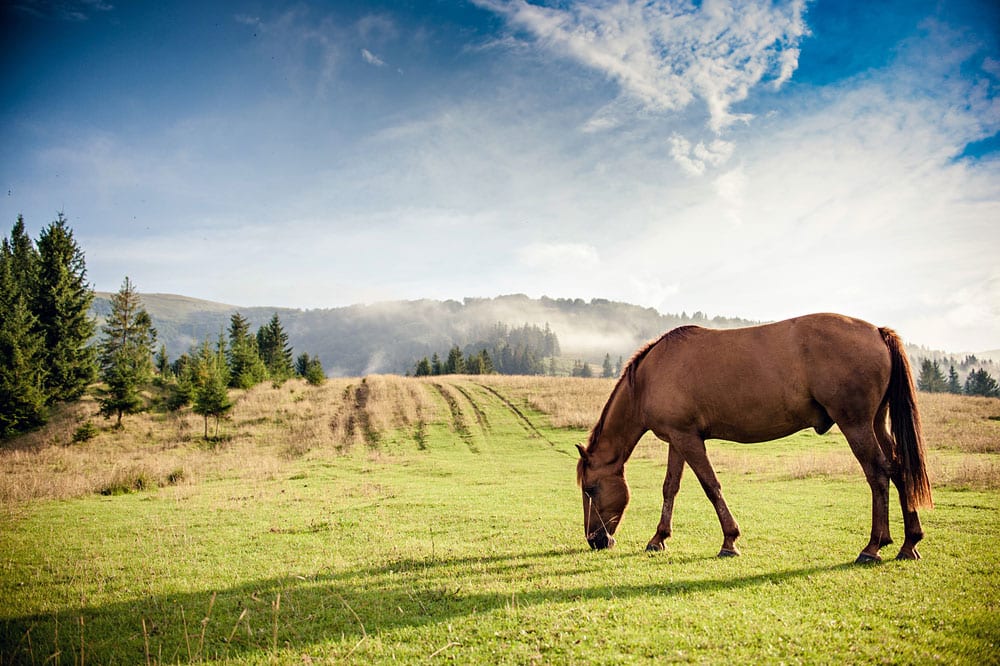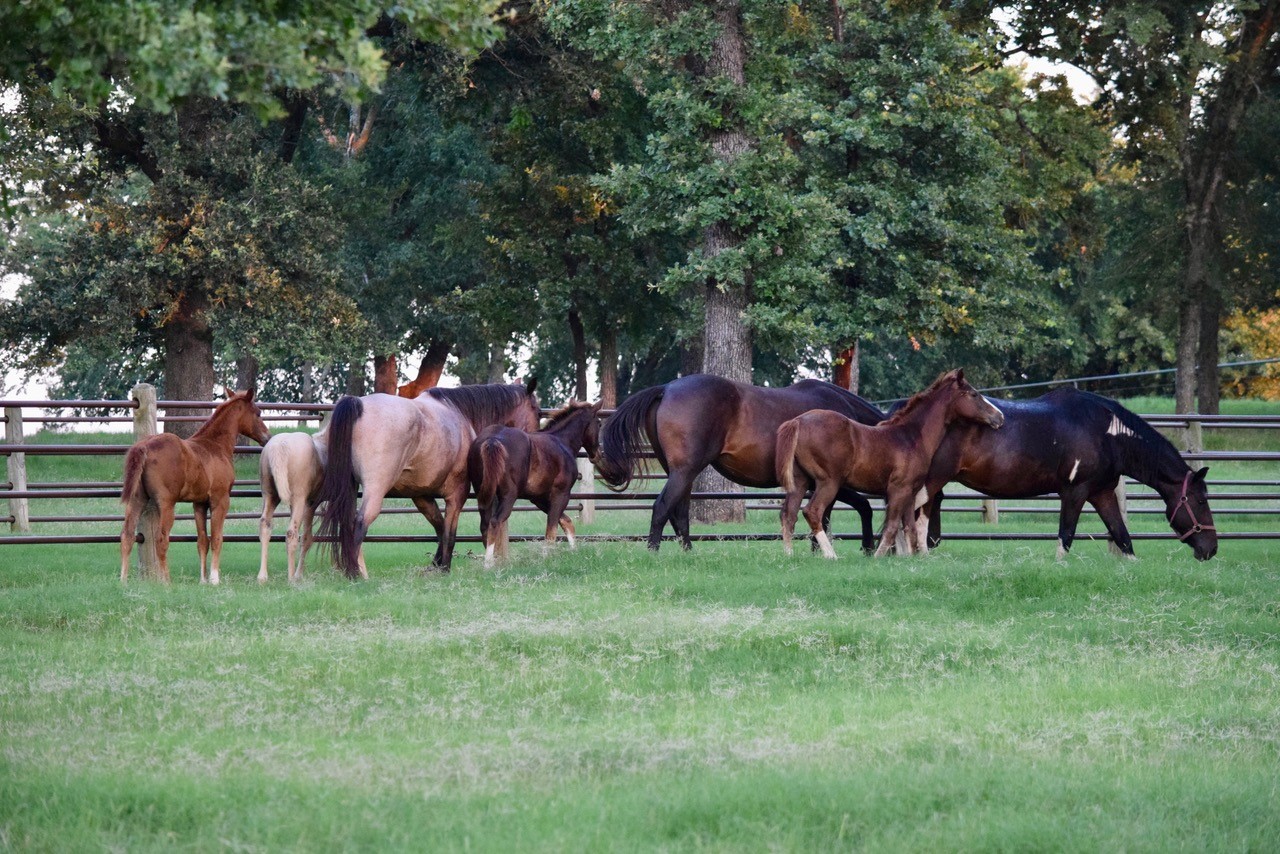There’s a reason the flippant phrase, “hay is for horses!” has found its way into popular conversation, even among non-horsey folk. Sure, it’s a funny way to tease someone who overuses the expression “hey” — but it’s also absolutely true. Hay IS for horses. As we’ve written countless times, forage is the number one best feed for horses.
For proof, look at the history of the horse. Long before humans came along and decided that it was much more convenient to feed horses once or twice a day in the barn, the dog-sized Dinohippus — the ancestor of our modern-day horses — spent all day grazing on grasslands. Since the prehistoric days, horses have gotten bigger and more domesticated— but little has changed about their dietary requirements.
Giving your horse unlimited access to grass is the best way to mimic your horse’s ancestors, but for many of us, that’s not practical year round. However, hay comes a very close second to grass — and may even be a better choice in some circumstances.
All Types of Forage are Good for Your Horse
Any type of forage — whether it’s grass, high-quality hay, chaff or chopped beet pulp — is highly beneficial to horses. A healthy and appropriate diet contains six basic nutrients for health:- carbohydrates (fibrous and nonfibrous)
- fats and fatty acids
- proteins/amino acids
- minerals
- vitamins
- water
Feed Your Horse Hay for Better Nutrition
High-quality hay provides a slow-burning, low-carbohydrate, fiber-rich option for horses, making it an obvious choice. Always test your hay at your local agricultural extension to be sure it’s of high quality and meeting your horse’s nutritional needs. Once you’ve determined that you’re feeding high-quality forage, consider some of the reasons for making it a cornerstone of your horse’s diet.- It’s convenient: According to a study by Penn State University, mature horses generally consume 2 to 2.5 percent of their body weight in feed each day. For an average-sized horse, that’s 20 to 25 pounds! For horse owners who live in northern climates or who don’t have access to 24/7 pasturing, hay fills a crucial gap.
- Hay is available year-round: Muddy pastures, blizzards or flies are no match for a hay bale fed in the shade or a protected shed or stall, making it possible for horses to get nutrition no matter the conditions.
- It’s easy to take on the road. Horses traveling frequently to shows can have access to high-quality nutrition regardless of location.
- You can feed hay when the fructan level is high in the spring. The sugar content in fresh grass is highest in the spring, making your horse more susceptible to colic and laminitis.
- Access to free-choice hay helps horses stay warmer in the winter time. The process of digestion provides additional heat during cold-weather months.




